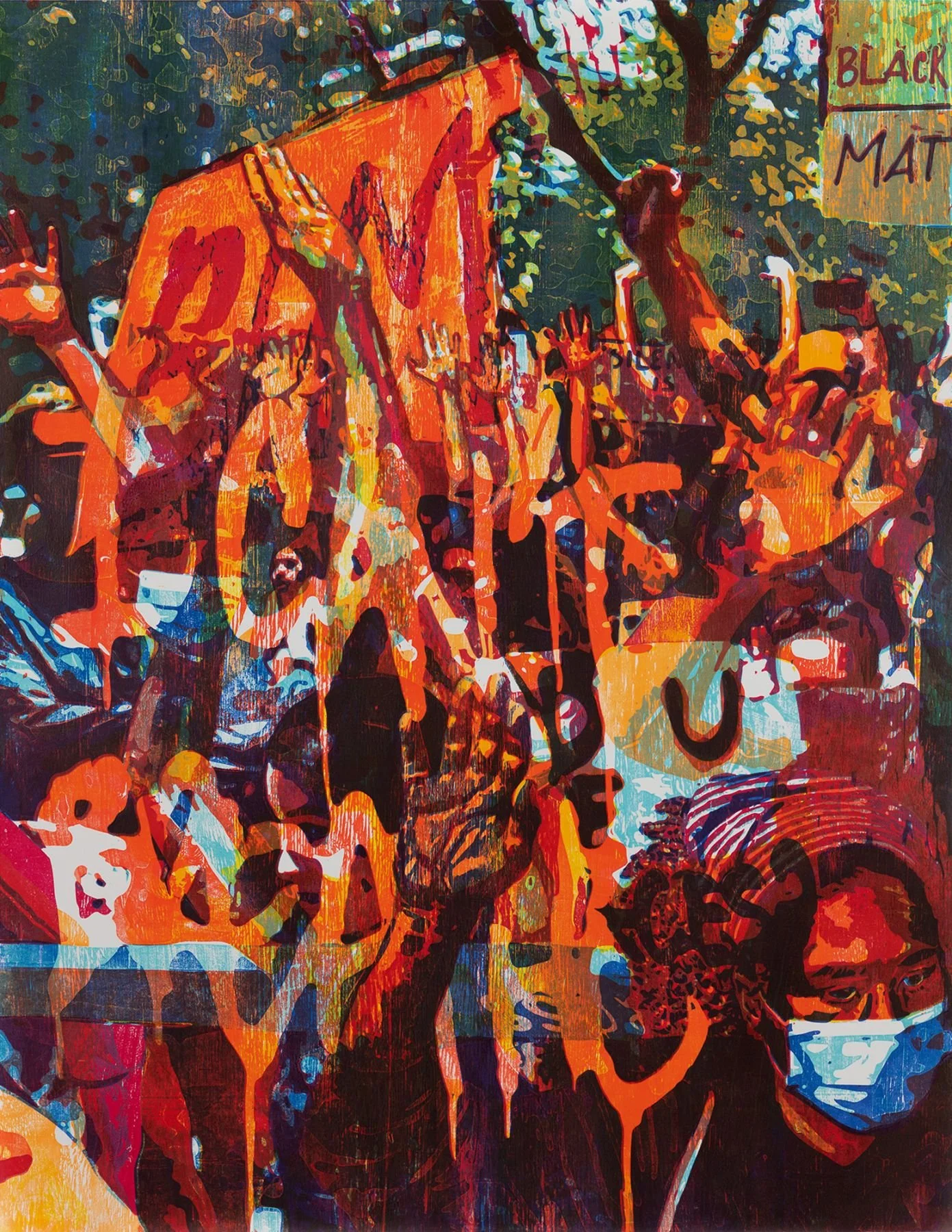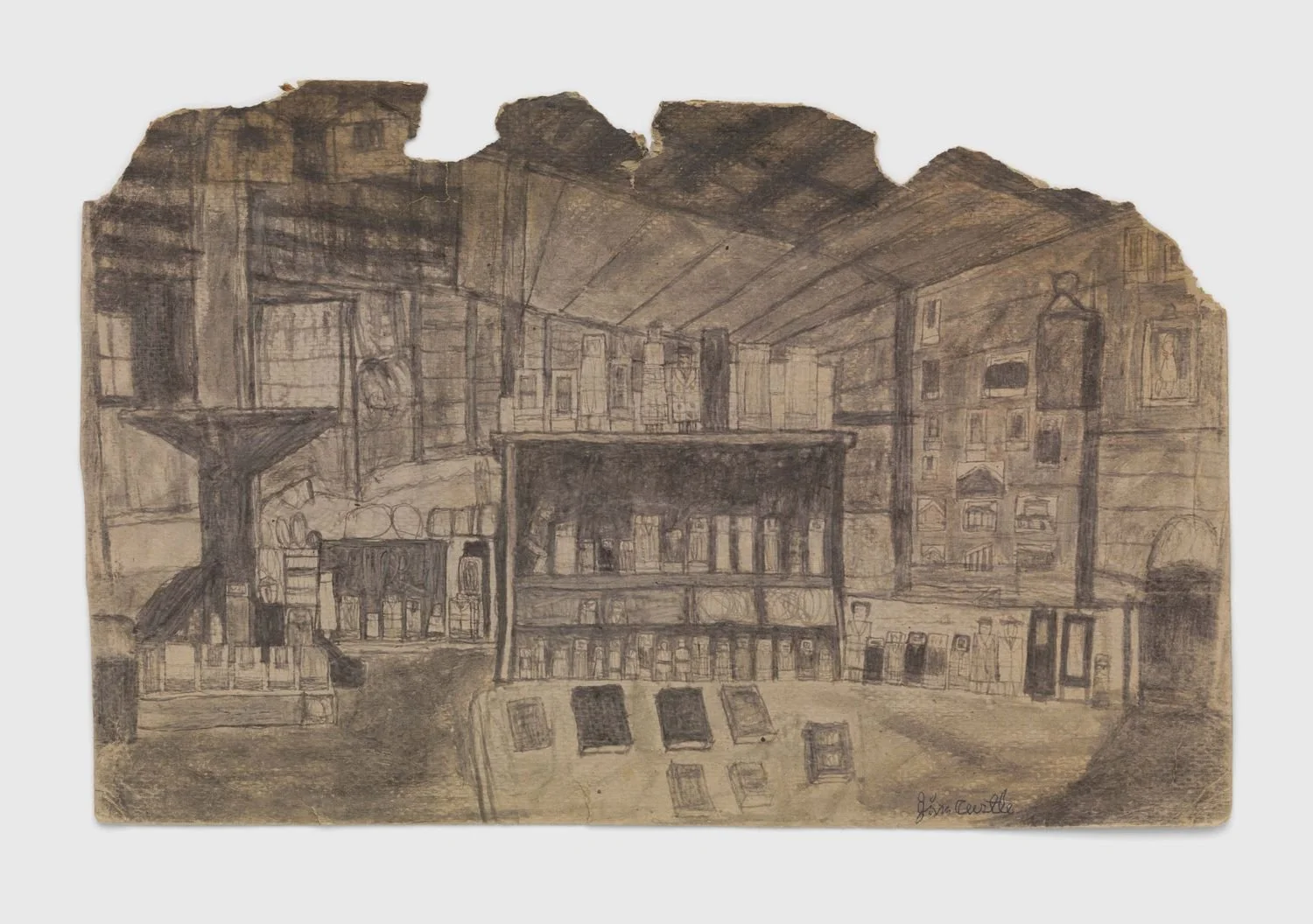Carrie Mae Weems
“Down Here Below”
New York, 513 West 20th Street
Drawing from new works and select early series, the show consists of several large-scale installations that highlight Weems’ decades-long engagement with injustice, identity, and redemption. Activism is central to Weems’ practice, which investigates race, family relationships, cultural identity, sexism, class, political systems, and the consequences of power. Through her work, Weems demands reconsideration of predominant narratives throughout our history.
As one enters the Gallery, two contemplative and celestial works, North Star (2021) and Down Here Below (2019) introduce a space for reflection. Following these pieces, Weems presents new, nearly abstracted photographs taken in Portland, Oregon in the wake of mass protests last year when many cities were shuttered, closed off, and boarded up. Despite their immediate historical moment, the images could be without time or place, creating a haunting environment that makes visible our memory, pain, and grief.
This is the first presentation in New York City of Weems’ seminal work, And 22 Million Very Tired and Very Angry People (1990-1991), since it was exhibited at the New Museum in 1991. The installation includes fifteen unique large-format Polaroids, each presenting a quotidien but evocative subject—a water glass, a globe, a rolling pin, a sickle—captioned with short phrases. With her words, Weems plays with the relationship between image and text to complicate and deepen the associative and symbolic meanings of the object, an enduring idea in her practice. Both individually and as a whole, the works offer various tools and conditions necessary to enact revolutionary change and protest. In the curatorial essay from the New Museum, Laura Trippi reflects that this work “indicates ideas of handmade revolution, of the efficacy of individual actions within a monolithic system, and of the possibility of individual actions linking up with others in a larger struggle, that are the installation’s main themes.”
The Push, The Call, The Scream, The Dream (2020), versions of which were recently shown at the Logan Center for the Arts at the University of Chicago and Artes Mundi 9 in Cardiff, Wales, was first created in response to the death of civil rights leader and United States Representative John Lewis. This multi-part installation focuses on moments of collective mourning, protest, and action. A master of riffing and recontexualization, Weems references her own earlier works and uses archival images including Charles Moore’s historic photographs of the 1963 Children’s Crusade in Birmingham, Alabama and photographs from the funeral of Medgar Evers, an event of deep outrage, sadness, and violence. The works, some tinted in pink and blue, evoke a sense of tenderness and care and draw a throughline from the past to the present to confront the viewer in our current historical moment.
A final large scale installation, Repeating the Obvious (2019), reiterates at various sizes the same image of a hooded figure from Weems’ 2016 series, All the Boys. Here, Weems looks again at criminality and the Black body, and the implications of the seemingly endless murders of Black people by police in the context of the Black Lives Matter movement. The redundancy of the image powerfully articulates the ongoing racial violence and depersonalization of its victims, while potently inverting stereotypes. The figure appears almost dream-like, emerging from our collective memory of those lost to racial violence, and those yet to come. Placed in front of this immersive installation, Seat or Stand And Speak (2021), which was created for Weems’s recent exhibition at the Park Avenue Armory, asks the viewer to listen or take action—to contemplate or affect change. Centered in the space, the sculpture stands as an invitation to find one’s own voice and be heard, while highlighting the dichotomy of our collective passivity and silence. Engaged with as a whole, the exhibition dares us to imagine what it is possible and to take responsibility for our future.






